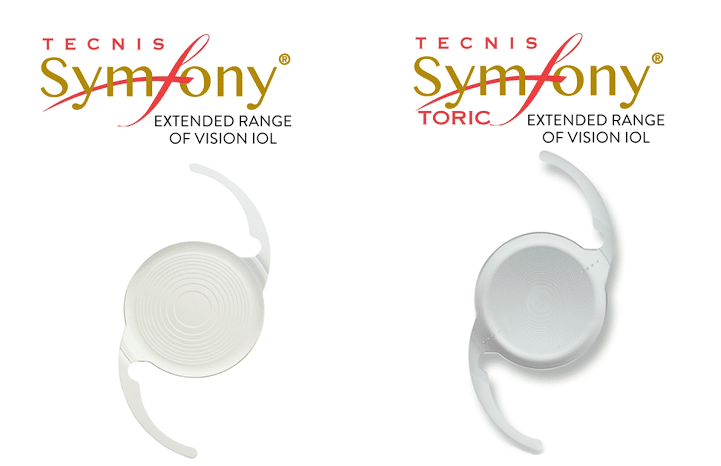Premium Lens Implant
Brumm Eye Center is pleased to announce the arrival of lifestyle or premium lens implants that can help you see better at all ranges of vision without glasses after cataract surgery. Previously, cataract surgery patients had only one choice for a lens implant, a monofocal lens implant that would correct far vision only and require full time glasses. During your cataract evaluation with Dr. Mathew Brumm, your daily visual requirements are reviewed and a premium lens implant will be suggested to match your lifestyle leaving you less dependent on glasses for most activities you enjoy.
Multifocal Lens Implants
Multifocal IOL lens implants enable patients to see at near, intermediate, and far distances after surgery. Brumm Eye Center uses both the Symfony Extended Depth-of-Focus Lens Implant and the Odyssey Full Visual Range Lens Implant.
Extended Depth of Focus (EDOF) lenses, also known as Extended Range of Vision lenses, use advanced diffractive optic technology to create a single, elongated focal point. This improves the “range of vision” or “depth of focus” for cataract surgery patients, providing a seamless, continuous range of clear vision from distance to near without any conscious effort or learning curve. Unlike bifocals or progressives, EDOF lenses leverage proprietary optic designs to deliver high-quality vision across a wide range of distances, from far to about 26 inches away, without the need for glasses. The result is a natural, effortless visual experience for cataract patients.
Symfony® Extended Depth-of-Focus Lens Implant
The Symfony extended depth-of-focus lens implant aims to give you clear vision from about 2 feet away to far distance. It features a central optical zone that widens the range of vision compared to the monofocal lens implant. In addition to clear vision for driving and watching T.V., the Symfony lens offers intermediate vision for using your computer or laptop and for seeing your dashboard while driving. By increasing the font size, you should be able to read your tablet or smartphone without glasses. Smaller print, such as books, magazine, and newspapers, will require the use of over-the-counter reading glasses. A toric version of the Symfony lens is available for patients with astigmatism. The Symfony lens alters the way light passes through the lens in order to give you a wider range of vision. Due to the laws of optical physics, this can result in some glare or halos around lights at nighttime. Most people adapt to these over time and are not significantly bothered by them.
Odyssey Full Visual Range Lens Implant
The Odyssey lens implant splits incoming light into three zones: far distance for driving and watching T.V., intermediate for using your computer, tablet, or laptop, and near for reading smaller print. This may greatly reduce your need for glasses, though no lens can promise to completely eliminate glasses. A thin pair of “glove compartment” glasses may be needed for sharper vision when driving at night, and reading glasses may be needed occasionally in low-light conditions or for small print. A toric version of the Odyssey is available for patients with astigmatism. The Odyssey splits light into different zones in order to offer a wide range of continuous vision. Due to the laws of optical physics, this can result in less overall contrast and some glare or halos around lights at nighttime. Because the Odyssey offers a wider range of vision, there is a higher chance of glare and halos with this lens compared to the Symfony lens. Most people adapt to these symptoms over time, and they become less noticeable.


